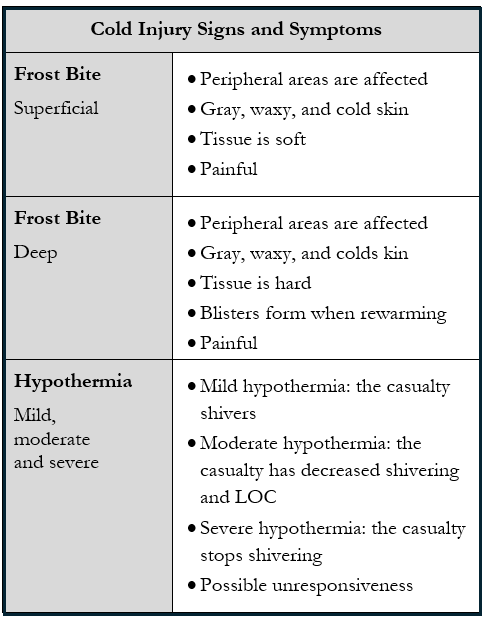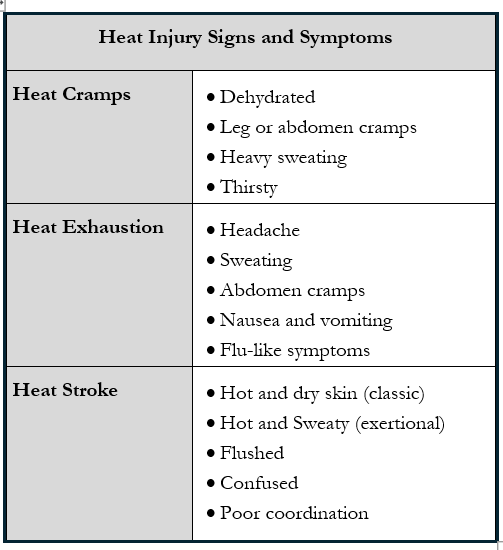The objective of this chapter is for a first aider to understand:
These types of injuries can occur in any environment or country, regardless of the weather conditions.
HEAT: To allow your body to properly cool itself, ensure that you are dressed for the weather, be aware of high humidity levels, and hydrate routinely before and during exercise or working, and resting in a cool area often, especially in extreme temperatures.
COLD: To help prevent heat loss, ensure you dress for the weather, hydrate before and during exercise or when working, be aware of wind chill, and do not allow sweat or wet clothes against your skin for a prolonged period.
Cold Injury Treatment
Get the casualty into a warm area and replace wet clothes with dry clothes.
Frost Bite can be warmed by using body-temperature water (between 37C and 40C). Only rewarm frostbite if there is no chance of refreezing. Place gauze between fingers or toes so the skin doesn’t stick together. Chemical warmers should not be used as they are too hot. After re-warming, protect the frostbitten parts from re-freezing and quickly transport the casualty for further care.
Hypothermia casualties should be given warm, sugary drinks (no alcohol) if responsive. If the casualty becomes unresponsive, ensure 911 has been called. Place the casualty in the recovery position, and monitor ABCs until EMS takes over. Ensure the head and body is covered with blankets.
Frozen State
A casualty that is found to be stiff when you tap, is said to be frozen. Do not attempt any first aid treatment. Call 911 and allow EMS to start medical aid.

Heat Injury Treatment
Get casualty into a cooler area (cab of vehicle or shade), have them rest and sip room temperature drinks of water or a sports drink. Remove excessive clothing.
Heat Cramps – help the casualty stretch out cramped muscles or massage the cramp.
Heat Exhaustion – casualties should lie down with head slightly elevated. If no improvement within 30 minutes seek medical attention.
Heat Stroke – is life-threatening so ensure 911 is called. Cool the casualty as fast as possible with cool wet cloths or ice packs in the neck, armpit and groin area. If unresponsive, monitor ABCs and give nothing to drink.
